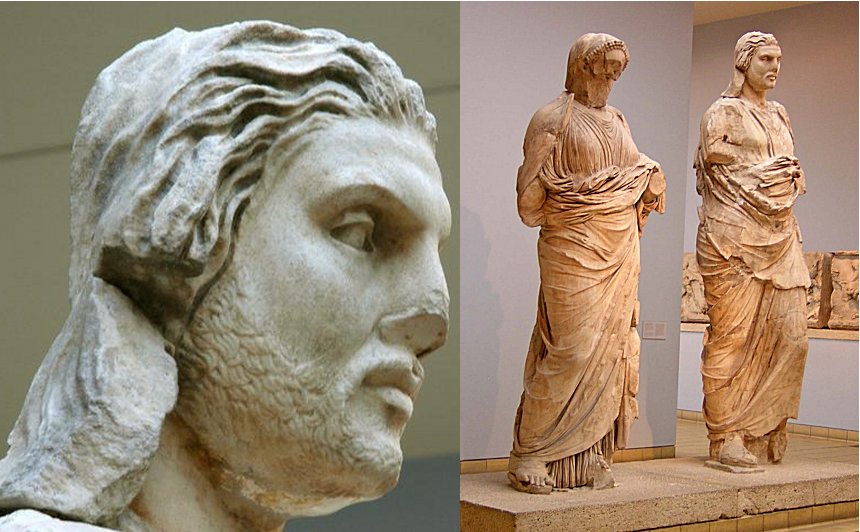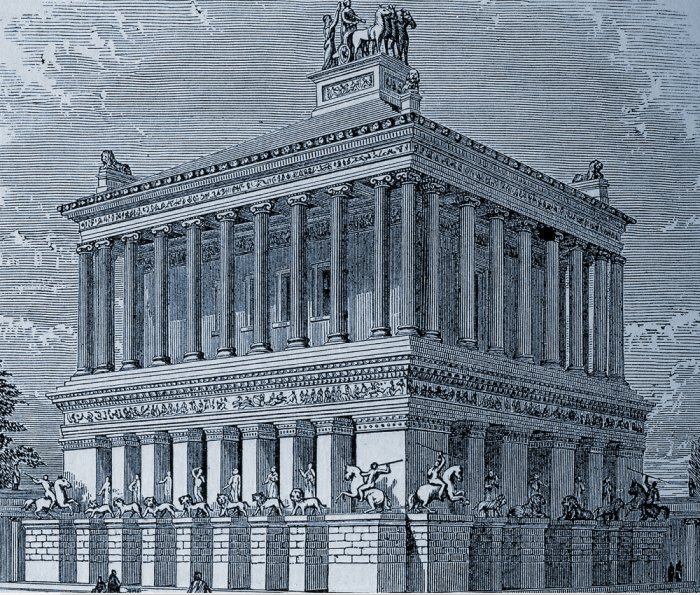Halicarnassus’ Monumental Tomb Built With Shining Stones Belonged To Carian Ruler Mausolus
A. Sutherland - AncientPages.com - Mausoleum at Halicarnassus is an ancient burial place of King Mausolus (377–353 BC), the eldest son of king Hecatomnus of Milas (Mylasa), a native Carian who became the governor of Caria province around 395 BC.
Halicarnassus was located in what is now, Bodrum on the Aegean Sea, in southwest Turkey. In 377 B.C., the city was the capital of a small kingdom along the Mediterranean coast of Asia Minor.

The tomb was erected on a hill overlooking the city and its construction began during the king’s lifetime. The whole structure sat in an enclosed courtyard
The tomb was built between 353 and 350 BC by Mausolus himself and his sister-wife Artemisia II of Caria. The structure was about 45 m (148 ft) in height, and its four sides were beautifully decorated with sculptural reliefs, each designed by one of four prominent Greek sculptors; Bryaxis, Leochares, Scopas of Paros, and Timotheus.
When Hecatomnus died, the Persians had already controlled several of the neighboring cities and districts. During his time of ruling, his son Mausolus extended his territory even further to the southwest coast of Anatolia. The territory was so vast that he decided to move his capital from Mylasa to Halicarnassus on the coast, from which, he and his queen/sister and wife Artemisia ruled over the surrounding territory for 24 years, from 377 to 353 BC.
Other districts of the empire were practically autonomous and ruled with the help of local rulers and governors.
Although descended from local people, Mausolus was strongly influenced by the Greek way of life and government. He founded many cities of Greek design along the coast and encouraged Greek democratic traditions.
The mausoleum of Mausolus - unique and very beautiful – and one of the designers was Scopas of Paros, one of the most skilled artists of the time, who is credited for rebuilding the Temple of Artemis at Ephesus. Hundreds of other craftsmen accompanied him at work.
The tomb was erected on a hill overlooking the city and its construction began during the king’s lifetime. The structure sat in an enclosed courtyard. At the center of the courtyard was a stone platform on which the tomb itself was placed. A staircase, lined by lions in stone, led to the top of this platform. Along the outer wall of this were many statues depicting gods and goddesses. At each corner stone warriors, mounted on horseback, guarded the tomb.
At the center of the platform was the tomb itself. Made mostly of marble, the structure rose as a square, tapering block to about one-third of the Mausoleum's 140-foot height. The entire section was decorated with relief sculptures depicting mythological and historical scenes from the Greek world. One part showed the battle of the Centaurs with the Lapiths. Another depicted Greeks in combat with the Amazons, a race of warrior women.
The Mausoleum was completed around 350 BC, three years after Maussollos's death, and one year after Artemisia's.
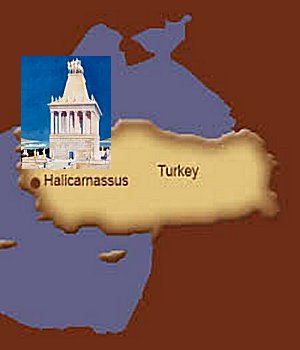 Some sources confirm that for 16 centuries, the Mausoleum remained in good condition until an earthquake caused some damage to the roof and colonnade.
Some sources confirm that for 16 centuries, the Mausoleum remained in good condition until an earthquake caused some damage to the roof and colonnade.
In the early fifteenth century, the Knights of St John of Malta invaded the region and built a spectacular crusader castle.
When they decided to fortify it in 1494, they used the stones of the Mausoleum. By 1522, almost every block of the Mausoleum had been disassembled and used for construction this spectacular
The mausoleum of King Mausolus was a very unique monument, first of all, because the statues depicted people and animals and were not dedicated to the gods of Ancient Greece.
Some of the sculptures survived and are today on display at the British Museum in London. These include fragments of statues and many slabs of the frieze showing the battle between the Greeks and the Amazons.
The mausoleum is one of the seven ancient wonders in the world.
Written by – A. Sutherland - AncientPages.com Senior Staff Writer
Copyright © AncientPages.com All rights reserved. This material may not be published, broadcast, rewritten or redistributed in whole or part without the express written permission of AncientPages.com
More From Ancient Pages
-
 Courageous Elizabeth Freeman – First African American Slave Who Filed A Freedom Suit
Featured Stories | Oct 24, 2018
Courageous Elizabeth Freeman – First African American Slave Who Filed A Freedom Suit
Featured Stories | Oct 24, 2018 -
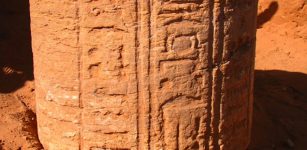 Abu Erteila’s Lost Temple And The Meroitic Empire: New Discoveries Shed Light On Nubian Civilization
Archaeology | Jan 14, 2016
Abu Erteila’s Lost Temple And The Meroitic Empire: New Discoveries Shed Light On Nubian Civilization
Archaeology | Jan 14, 2016 -
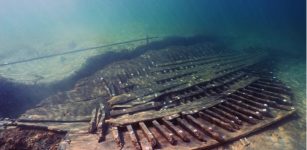 Ancient Roman Shipwreck Marausa 2 With Intact Cargo Recovered Off The Coast Of Sicily
Archaeology | Oct 23, 2023
Ancient Roman Shipwreck Marausa 2 With Intact Cargo Recovered Off The Coast Of Sicily
Archaeology | Oct 23, 2023 -
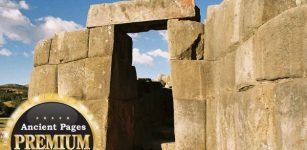 Sacsayhuamán – Was It Built By ‘Demons’ Or Viracocha The Bearded God?
Ancient Mysteries | Apr 10, 2014
Sacsayhuamán – Was It Built By ‘Demons’ Or Viracocha The Bearded God?
Ancient Mysteries | Apr 10, 2014 -
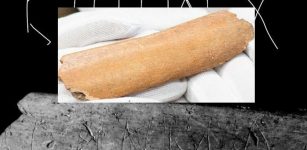 Oldest Writing System Among Slavs To Be Germanic Runes – New Study
News | Feb 15, 2021
Oldest Writing System Among Slavs To Be Germanic Runes – New Study
News | Feb 15, 2021 -
 Magnificent Hochdorf Chieftain’s Grave – Resting Place Of The Celtic Tutankhamun
Featured Stories | Aug 19, 2019
Magnificent Hochdorf Chieftain’s Grave – Resting Place Of The Celtic Tutankhamun
Featured Stories | Aug 19, 2019 -
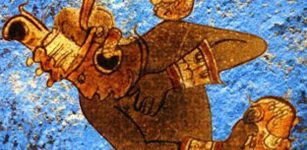 Mystery Of The Maya Blue Pigment And Its Unusual Chemical Composition
Ancient History Facts | Mar 23, 2016
Mystery Of The Maya Blue Pigment And Its Unusual Chemical Composition
Ancient History Facts | Mar 23, 2016 -
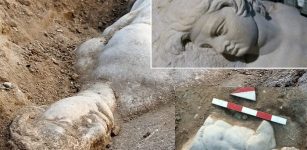 1,800-Year-Old Relief Of Mythological Satyr Figure Under Restoration
Artifacts | Sep 5, 2020
1,800-Year-Old Relief Of Mythological Satyr Figure Under Restoration
Artifacts | Sep 5, 2020 -
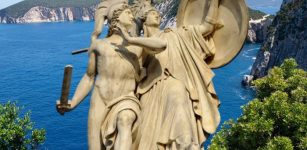 Researchers Find Oldest Evidence Of Human-Caused Lead Contamination In Aegean Region
Archaeology | Feb 4, 2025
Researchers Find Oldest Evidence Of Human-Caused Lead Contamination In Aegean Region
Archaeology | Feb 4, 2025 -
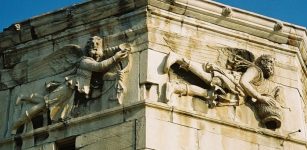 Tower Of The Winds And Daydreaming Of Andronicus Of Cyrrhus
Featured Stories | May 14, 2019
Tower Of The Winds And Daydreaming Of Andronicus Of Cyrrhus
Featured Stories | May 14, 2019 -
 Ceibal Is The Oldest Known Ceremonial Site Of The Maya Civilization
Ancient History Facts | Oct 1, 2016
Ceibal Is The Oldest Known Ceremonial Site Of The Maya Civilization
Ancient History Facts | Oct 1, 2016 -
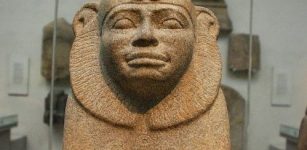 Taharqa – The Most Powerful Of The Black Pharaohs
Featured Stories | Jan 29, 2016
Taharqa – The Most Powerful Of The Black Pharaohs
Featured Stories | Jan 29, 2016 -
 Arborglyphs – Basque Immigrant Sheepherders Left Their Marks On Aspen Trees In The American West
Featured Stories | Jul 15, 2024
Arborglyphs – Basque Immigrant Sheepherders Left Their Marks On Aspen Trees In The American West
Featured Stories | Jul 15, 2024 -
 Harappan Civilization Built Massive Protection Walls Against Tsunami 5,000 Years Ago
Archaeology | Jan 10, 2017
Harappan Civilization Built Massive Protection Walls Against Tsunami 5,000 Years Ago
Archaeology | Jan 10, 2017 -
 Fossil Study: Coelacanths Thrived In Switzerland After A Mass Extinction
Fossils | Jul 28, 2023
Fossil Study: Coelacanths Thrived In Switzerland After A Mass Extinction
Fossils | Jul 28, 2023 -
 Isabel Neville And Unsolved Mystery Of Her Death
Featured Stories | Mar 28, 2019
Isabel Neville And Unsolved Mystery Of Her Death
Featured Stories | Mar 28, 2019 -
 Evidence Hominins Were Present In Europe Far Earlier Than Previously Thought
Human Beginnings | Jan 28, 2025
Evidence Hominins Were Present In Europe Far Earlier Than Previously Thought
Human Beginnings | Jan 28, 2025 -
 Centuries-Old Authorship Mystery – Solved By Stanford Musicologist Jesse Rodin
Archaeology | Jul 18, 2022
Centuries-Old Authorship Mystery – Solved By Stanford Musicologist Jesse Rodin
Archaeology | Jul 18, 2022 -
 North America’s First Languages Originate From Siberia
Linguistic Discoveries | Apr 10, 2024
North America’s First Languages Originate From Siberia
Linguistic Discoveries | Apr 10, 2024 -
 America’s First Civilization Was Made Up Of ‘Sophisticated’ Engineers – New Evidence
Archaeology | Sep 2, 2021
America’s First Civilization Was Made Up Of ‘Sophisticated’ Engineers – New Evidence
Archaeology | Sep 2, 2021

